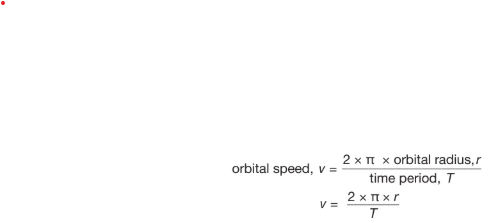Astrophysics part 1
1/21
Earn XP
Description and Tags
Name | Mastery | Learn | Test | Matching | Spaced |
|---|
No study sessions yet.
22 Terms
Astrophysics 1
What is the universe?
It is a large collection of billions of galaxies
What is the galaxy?
It is a large collectiom of billions of stars
What is the solar system? Where is our solar system?
A solar system is a collection of planets orbiting a common star. Our Solar System is in the Milky Way galaxy
What does the gravitational force depend on?
Mass of the two objects
Greater mass = stronger gravitational force
Distance between the masses
Greater distance = smaller gravitational force
What does the gravitational force do in our solar system?
Holds the solar system together and allows the various bodies to orbit around others (follow their curved path)
Moons orbit planets
Planets orbit the Sun
Artificial satellites can obit the Earth
Comets can orbit the Sun
Why is the Sun able to make all the planets orbit around it?
It is able to do that because our Sun is massive (contains over 99% of the mass in the Solar System). It thanks to this strong gravitational attraction/force created by the huge masses of the Sun and the rest of the planet
Why does the Moon not crash into the Earth and the planets do not crash into the Sun?
They are moving IDK what the markscheme would say
Planets near the star take less time to orbit the star. Suggest why (1)
How does the path and velocity of the planets closest to the Sun compare to those that are further away?
Any one of:
Smaller orbital path/distance travelled for close planets
Larger speed for close planets
Those planets closest to the Sun feel the greatest attraction and so follow the most curved paths and would also take less time to orbit the star as there is a stronger gravitational pull which requires a higher orbital velocity to mantain a stable orbit
What is a satellite? 2 types?
An object that orbits a planet
Natural and artificial
What are natural satellites?
Moons
Artificial satellites are very useful. What are the differences in usage between using satellites in a low orbit and higher orbit?
High = communicate over large distances (e.g international phone calls)
Low =monitor in detail Earth’s surface (e.g temp in oceans)
What are comets?
Object made from ice and rocks that orbits the Sun in an elongated orbit
Describe the differences in the orbits of comets, moons and planets
Comets have highly elliptical (elongated) orbits, tha orbit the Sun. Sometimes their orbit takes them very close to the Sun and other times they travel to the edge of the Solar System.
Moons have circular orbits that orbit around a planet
Planets orbit in slightly squashed circles called ellipses around the Sun
State two ways in which the orbits of Earth and Mars are similar
State one way in which their orbits are different
M1- Idea that orbit shapes both are aprox circular/elliptical
M2- Idea that both planets orbit the same star/the Sun
M3- Similar plane of orbit
M4- Same direction of orbit
Different orbital radii
What is the gravitational field strenght (g)? What is the gravitational force measured in? What about the gravitational field strength?
A measure for the strength of gravity acting on an object/how great the force of gravity acting on an object is
Gravitational field strength: newtons per kilogram (N/kg)
Gravitational force: newtons (N)
IMPORTANT: gravitational field strength is different from gravitational force. El segundo se refiere al actual force que el object esta experimentando
What does a body’s gravitational field strength depend on?
Mass
Larger = stronger
Radius of planet
Larger radius = smaller the gravitational field strength at its surface (if you were to be standing)
because the surface is further away from the center of the planet
2 planets that have the same mass but the one with a bigger radius will have the smallest g
What is your weight going to compare to standing on Earth and standing on the moon and a planet like Jupiter?
Moon’s g is only one sixth that of the Earth so you would weigh 100N on the moon if on Earth you weighed 600N
On Jupiter you would weigh much more, 2½ times more
What is Earth’s gravitational field strenght?
10 N/kg
The orbital speeds of satellites vary greately depending on the tasks they are performing.
Communication satellites put in high orbits and travel aprox 3 km/s
Those observing the Earth’s surface put into low polar orbits travel at speed of about 8 km/s
What is the equation to calculate the orbital speed?
speed, v = distance moved, s / time period, t
distance moved = 2 x π x orbital radius, r
time period, T, is the time for one complete orbit
We can use this equation to calculate the orbital speed of
satellites
planets where r is the average distance from the Sun

Why do comets have a greater speed nearer the star?
They are pulled by the Sun’s gravitational force which is greater